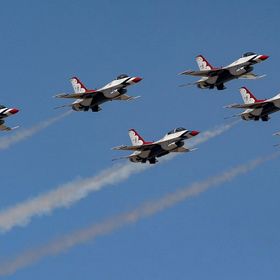The Little Green Heron is a shy little bird. I got lucky one day on the water that this one seemed to pose for the camera....
Read more
The Little Green Heron is a shy little bird. I got lucky one day on the water that this one seemed to pose for the camera.
Read less
Read less
Views
205
Likes
Awards
Action Award
Top Shot Award 22
Peer Choice Award
Top Choice
Superb Composition
Peer Award
Absolute Masterpiece
Outstanding Creativity
Magnificent Capture
Categories
Same photographer See allBehind The Lens
Discover more photos See all
Behind The Lens
Location
I took this photo while on Lake Tohopekaliga with Wild Willy's Airboat Tours. Normally the Little Green Heron, at least in my experience, is a reclusive and skittish little bird. This one landed just about 10' from the airboat and seemed content to just relax there for a few minutes. On the lily pads, the boat provided a stable platform even with five people aboard.Time
This shot was taken about noon time in direct sunlight. That's not normally my favorite condition for shooting but without a lot of shadows, it really turned out nice for this shot. Some years ago a photographer friend told me that the finer the detail there is in a subject, the sharper an image will look if it's properly focused and exposed. I have found that to be true and this is one example that shows it.Lighting
In this case, bright direct sunlight, proved to be advantageous for the circumstances. Usually direct sunlight produces dark shadows and too much contrast for balanced images in my mind. But, the reflective quality of the lili pads brought enough light into the dark shadows, that post processing the shot taken in RAW format, allowed subtle corrections that made for a nicely balanced exposure.Equipment
This was the first time out with a new Sigma 18-300mm telephoto lens and I was impressed with the quality of the detail it captured hand held at full 300mm zoom. I shot this with a Canon EOS 70D which for a reasonably priced DSLR, I am very pleased with.Inspiration
I am partial to shooting wildlife but if you look at my profile, you'll see I love to shoot a huge variety of subjects. But, when a beautiful bird flys into a scene and just stops and poses, who can resist. I must have 20 images of the Little Green Heron and I'm not even sure this is the best one.Editing
I always shoot RAW for the ability to finely tune images in Photoshop post processing. This one didn't need a lot of work. I use the histogram to balance both color and exposure and when I have a nice image, I'll play with all the processing slides till I hit on something I like. I experiment. It's a RAW image. I can save what I like and reopen the RAW file and start again as often as I like without image degradation. You've heard it a thousand times, always shoot in RAW. There are plenty of reasons to take that well intentioned advice.In my camera bag
I consider myself an advance amateur photographer mostly because I've been doing it so long, not because I am especially good at it. I have one camera body, a Canon EOS 70D. My go to lens is the new Sigma 18-300mm zoom. I also have a Tamron 18-75mm zoom but I seldom use it. I keep the usual UV filter on all my lenses more for protection of the glass than out of need. I like long exposures and depth of field so I also have a handful of neutral density filters to use for those shots I do almost always on a tripod. I keep my lenses clean and my batteries charged. I always take several memory chips and at least two extra charged batteries in the field with me. I don't have a fortune in equipment and though I'd like to have some high end prime lenses, I am happy with what I have for now. Everything I have would cost maybe $2500 so it's within the range of a lot of serious amateurs.Feedback
If you like this image you can accomplish similar images. Time is the key ingredient. Time in the field, time experimenting with your equipment and time away from the diversions of everyday life. I used to use auto-focus and auto-exposure. These days, I do almost everything manually. I miss a lot of potentially great shots that way but the ones I do capture, are what I really want. F-Stops, ISO, Exposure, the modern digital cameras have almost limitless capability but it's up to you to determine how to take advantage of it. Be still, appreciate your subject while you're shooting and you'll appreciate the results more. If you shoot wildlife, when you're done shooting, withdraw slowly as though you're leaving a friend you don't want to disturb. It helps to get them accustomed to people being around and you may get an even better image next time.













































